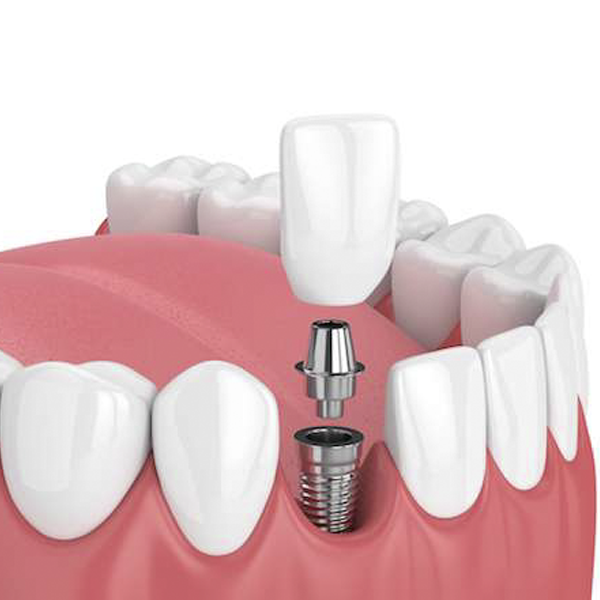
Implants
Dental implants have changed the way we think about tooth replacement. Traditionally, teeth that have been lost have relied upon bridges or dentures to replace their bite surface. While bridges or partial dentures maintain the space between teeth and help with effective chewing, they do not promote jaw bone remineralization.
Dental implants are installed into the jaw bone, where their titanium roots bond with bone to provide strength and support to the artificial root. When bite force is applied to the artificial tooth on an implant, the force is distributed into the boney structure that surrounds its artificial root and promotes remineralization. Without remineralization the bone can resorb, leading to a loss of strength and integrity in the jaw.
An excellent choice for one or more missing teeth, implants are a superior alternative to dentures or bridges. Many people seek dental implants to replace teeth which have been removed for various reasons; teeth may have decayed past the point of salvaging, or broken during everyday use, or in an accident. Implants can be a long lasting, comfortable alternative to removable dentures or dental bridges.
Losing a tooth can also mean losing confidence in your appearance. Sometimes, loss of a tooth is unavoidable due to an accident, disease or extraction. This replacement will not only boost your confidence, but it will also support the other teeth in your mouth to ensure that they remain in place. This technique results in a secure and natural looking replacement tooth.
Stages of implant treatment
-Diagnosis and Treatment Planning: The suitability of the patient’s bone structure and amount is determined clinically and radiologically. A suitable treatment planning is made in accordance with the patient’s wishes and needs following the doctors’ examination and evaluation.
-Implant Surgery: General anaesthesia can be preferred depending on the duration of the procedure. However local anaesthesia is more commonly used due to higher efficiency and lower cost. After all sterile conditions are fulfilled in line with the implant system to be applied, implant spaces are prepared with special drill holes and the implants are placed in them.
-Healing Process: The gum healing process; After 7-10 days, the stitches are removed but the process is approximately 3-6 months. The bone tissue heals very slowly compared to the gums. This process can be prolonged in advanced surgical procedures such as bone addition to the jaw.
-Prosthesis Construction Phase: There are two types of implant-supported prostheses. Fixed and mobile prostheses. Fixed prosthetic treatments; These are designed in the form of crowns and bridges, and completely restore the natural tooth function. With removable prosthetic treatments, it must be ensured that the palates which can be attached and removed by the patient, have a very good retention with implants.
